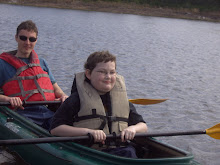ScienceDaily (Sep. 29, 2008) — Survivors of childhood or adolescent cancer have a greater than 8-fold increased risk of death than the general U.S. population 16 to 32 years after hitting the five-year survival mark.
The proportion of childhood and adolescent cancer patients who survive five years after their diagnosis has been growing over the last four decades. However, past studies indicated that these individuals continue to have excess morbidity and mortality due to their original disease and treatments.
To find out what the long-term risk of death is for these individuals, Ann Mertens, Ph.D., of Emory University and Children's Healthcare of Atlanta and colleagues examined data from 20,483 five-year survivors who were diagnosed with childhood or adolescent cancer between January 1, 1970 and December 31, 1986 and enrolled in the Childhood Cancer Survivor Study.
The researchers searched the National Death Index and state death records for deaths occurring between January 1, 1976 and December 31, 2002. With that information, they calculated cause-specific mortality rates and the overall ratio of observed deaths relative to the number of expected deaths in the general population, which is called the standardized mortality ratio.
During the follow-up period, 2,821 (13.8%) of the five-year survivors died. The overall standardized mortality ratio was 8.4 and the absolute excess risk of death from any cause was 7.36 deaths per 1,000 person-years. Of the 2,534 individuals whose cause of death could be identified, 57.5% died due to disease recurrence. When compared with what would be expected in a population of this age group, substantial increases in deaths due to subsequent malignancy, heart disease, and pulmonary problems were found.
"In conclusion, children and adolescents diagnosed with cancer continue to be at elevated risk for death due to recurrences of the primary disease, and as a result of late effects of therapy," the authors write.
Adapted from materials provided by Journal of the National Cancer Institute, via EurekAlert!, a service of AAAS.
Scott & Sunny

Subscribe to:
Post Comments (Atom)














































3 comments:
I think all I can say Steph is that the research was on children diagnosed, and therefore treated, up to 1986, and that knowledge and treatment programs have changed dramaticaly since that time.
And as you said yesterday, maybe you shouldn't read to much - once read you cannot pretend you haven't - but sometimes to much knowledge is frightening. You have enough on your plate as it is.
love you all
mum/nana
It's my nature to over-analyze everything. To compile as much information and to know every last detail. And even then, I'm never satisfied that I know what is available to know. I've met all the most difficult "bumps" with a never-ending need for the details. I will share this; it's never changed the outcome - in my experience. It has satisfied my need to try to exert some sort of control over the situation but short of that... in retrospect, they were moments not just spent worried, enraged or sad - they were moment NOT spent living. A sad waste, regardless of one's beliefs. I strive to have less moments each day wasted with worry and more using them instead for a future happy memory. I know, I've gotten into the kool-aide. What can I say, sunshine? It doesn't always work, but I feel much better trying. Sending you all my love.
xoxoxox
S.
what your mom & sandie said...
i know trying to wrestle control over a situation that seems out of control is a natural reaction, just don't forget to stop occationally and just be.
thinking of you often.
nina
Post a Comment